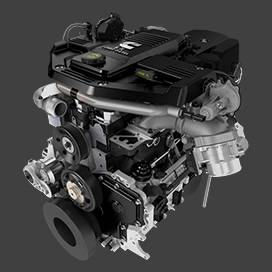7 月 . 27, 2024 03:18 Back to list
Understanding the Importance of Semi Truck Brake Drum Sizes for Safe Trailers and Cargo Transport
Understanding Semi-Truck Brake Drum Sizes
Semi-trucks, also known as tractor-trailers or big rigs, are essential vehicles in the logistics and transportation industry. They are designed to carry heavy loads across long distances, which places significant demands on their braking systems. One critical component of these systems is the brake drum, which plays a vital role in ensuring the safety and efficiency of heavy-duty trucks. Understanding the size of semi-truck brake drums is crucial for maintenance, performance, and regulatory compliance.
What is a Brake Drum?
A brake drum is a cylindrical component attached to the wheel of a vehicle. When the brakes are applied, brake shoes press against the inside surface of the drum, creating friction that slows down or stops the vehicle. In semi-trucks, where weight can reach upwards of 80,000 pounds, brake drums endure substantial stress and are designed to withstand high levels of heat generated from braking.
Size Variations
The size of semi-truck brake drums can vary significantly depending on several factors, including the truck’s weight class, type of braking system, and manufacturer specifications. Common sizes for brake drums in heavy-duty applications are typically in the range of 16.5 inches to 17.5 inches in diameter, though some models can be larger or smaller. The standard thickness of these drums usually ranges from 5 to 7 inches.
Selecting the appropriate brake drum size is critical. A drum that is too large may not fit within the truck's wheel or meet regulatory specifications, while one that is too small may not provide adequate stopping power, leading to increased wear and potential safety hazards.
Importance of Proper Sizing
semi truck brake drum size

Using the correct brake drum size is essential for optimal vehicle performance. If the brake drum is not appropriately sized, it can lead to uneven wear patterns, reduced braking efficiency, and increased stopping distances. Furthermore, improperly sized drums can cause excessive heat buildup, leading to brake fade, which significantly compromises the truck's safety.
In addition to performance implications, there are regulatory considerations related to brake drum size. The Federal Motor Carrier Safety Administration (FMCSA) in the United States has specific regulations governing braking systems on commercial vehicles, including dimensions for brake components. Failure to comply with these regulations can result in fines and, more importantly, pose risks on the road.
Maintenance and Replacement
Regular maintenance of semi-truck brake drums is crucial for ensuring safety and performance. Drivers and fleet managers are encouraged to inspect brake drums for signs of wear and damage. Common indicators that a brake drum may need replacement include scoring, cracking, or significant heat discoloration. Additionally, routine measuring of the drum's diameter and thickness is necessary, as the drums can wear over time.
When replacing brake drums, it is essential to choose the correct size to match the specifications of the braking system and vehicle. Many manufacturers provide detailed guidelines, and it is advisable to consult with experienced mechanics or references in the industry to ensure proper fit and performance.
Conclusion
In summary, the size of semi-truck brake drums is a critical factor that significantly impacts the safety, performance, and compliance of heavy-duty trucks. Understanding the variations in size, the importance of proper selection, and the implications of maintenance can help ensure that these essential vehicles remain safe and reliable on the roads. For any fleet or truck owner, paying close attention to brake drum specifications is not just a matter of compliance, but a vital aspect of operating a safe and efficient transportation system.
-
Brake Drum for Kamaz Trucks Durable OEM Replacement & High Performance
NewsMay.30,2025
-
Brake Drum Man High-Quality Drum Brake & Shoe Solutions
NewsMay.30,2025
-
High-Performance Brake Drum for Kamaz Trucks Durable Drum Brake Components
NewsMay.29,2025
-
Brake Drum Man High-Quality Drum Brake Drums & Brake Shoes
NewsMay.29,2025
-
Brake Drum MAZ High-Performance & Durable Replacement Parts
NewsMay.29,2025
-
heavy truck brake drums
NewsMar.07,2025
